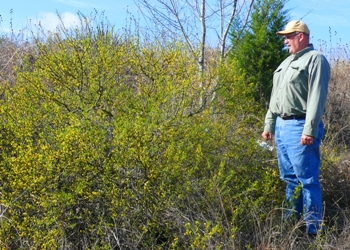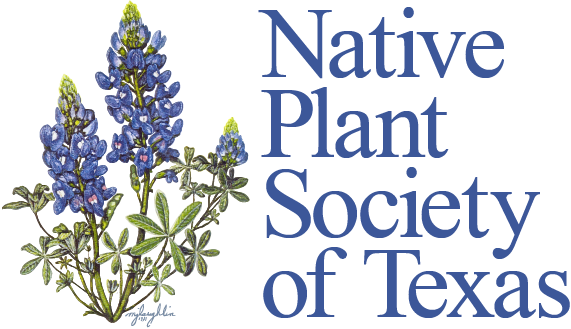Author: Bill Ward
From time to time, the Boerne Chapter of the Native Plant Society presents its SUN Award (Standing Up for Natives Award) to someone who has made special contributions to the native-plant movement. This recognition is reserved for those whose efforts involving native plants have made a lasting impact on our community. Chuck Janzow received the SUN Award at the last meeting of the Boerne Chapter NPSOT.
Chuck Janzow was a pioneer in promoting native plants in the Boerne community. Chuck was propagating native plants and encouraging their use in landscaping long before there was a NPSOT chapter in Boerne.

Janzow was a science teacher at BHS for over 30 years and was Chairman of the Science Department for many years. Almost 20 years ago, Janzow’s wife Martha Barker said she wanted to purchase some bushes of evergreen sumac for their yard. His response was, “I can grow those.”
That started Janzow’s experimentation with propagating many of the local native shrubs and trees. He was quite successful at this and eventually became a wholesale supplier of several native plants. His backyard nursery commonly grows native plants that few other nursery people attempt to propagate. Many of the bigtooth maples and Texas madrones in various nurseries around the Hill Country were supplied to the retailers by Janzow and Barker’s Green Cloud Nursery.
Chuck, a self-taught horticulturist, has gained the admiration of his peers with his success in propagating native plants, especially from seeds. In her second edition of “How to Grow Native Plants,” Jill Nokes lists Chuck Janzow among her “collaborators” and cites his advice many times in her text.
Chuck and Martha are intimately familiar with the native vegetation along almost every road in this part of the Hill Country. Gathering seed from special plants they have encountered around this area has allowed them to grow some interesting natives virtually impossible to find at other wholesale nurseries. For example, they recently raised some healthy shrubs of redroot or Jersey tea (Ceanothus herbaceus). For a long time, I’ve hoped to get a redroot for our yard, but haven’t found one at a nursery. Thanks to Chuck, redroot now is a pride and joy of our backyard!
Janzow-propagated plants have long been major attractions at the Cibolo Nature Center’s Mostly-Native Plant Sale every spring. Chuck was an advisor and volunteer laborer from the very beginning of the Cibolo Wilderness Trail. Over many years Janzow and his BHS students contributed thousands of volunteer hours to helping develop and maintain the Cibolo Nature Center.
Chuck was a charter member of the Boerne Chapter of NPSOT, and he generously continues to contribute both native plants and guiding advice to our chapter. His SUN Award is well deserved.
As an aside, the first native plants we introduced into our yard a dozen years ago were propagated by Janzow and, interestingly enough, another former Boerne High School teacher. The late Betty Winningham, who was a math teacher at BHS for ten years or so, also played a major role in making Hill Country natives available for home gardens.
After Betty retired from BHS in the mid 1990s, she set out to learn about propagation of native plants. With the help of her husband and father she opened a nursery specializing in native plants. The Natives of Texas Nursery on the Winningham ranch between Kerrville and Medina is among the best known growers of native plants in the Hill Country.
